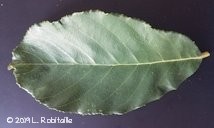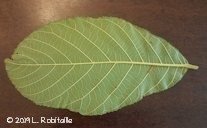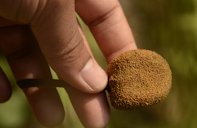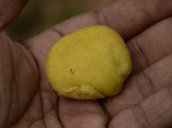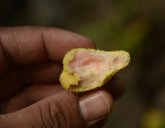| Lakoocha, Monkey Jack - Artocarpus lacucha | |||||||||||||
|---|---|---|---|---|---|---|---|---|---|---|---|---|---|
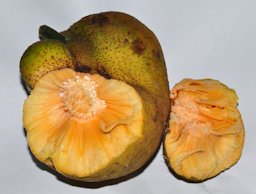 Fig. 1  Lakoocha or Monkey Jack (Artocarpus lakoocha) Fig. 2  New growth, A. lakoocha (= A. lacucha) in Panchkhal VDC, Nepal  Fig. 3  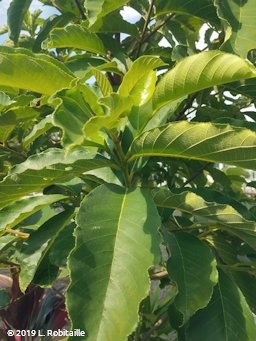 Fig. 4  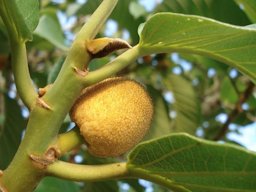 Fig. 8  A. lakoocha Roxb  Fig. 9  A. lacucha, lakoocha 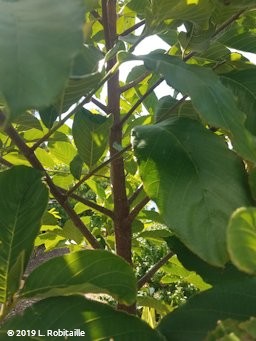 Fig. 13   Fig. 14  Main framework of the tree 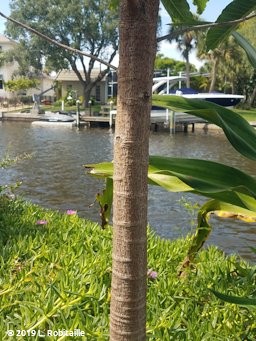 Fig. 15  Trunk on a two year old tree 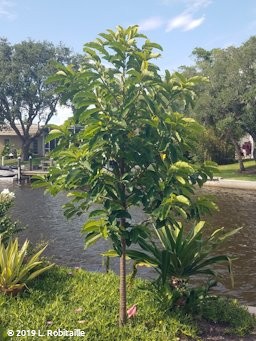 Fig. 16   Fig. 17  Masticatoires: de gauche à droite, A. lakoocha, Pentace burmanica, Areca catechu, Piper betle. (masticatories)  Fig. 18  A. lakoocha Roxb. | Scientific
name Artocarpus lacucha Buch.-Ham. Common names English: monkeyfruit, monkey-jack, monkey-jack-tree; Burmese: myankdok; India: badhal, dephal, dhau, lakoocha, lakuch 6,7 Synonyms Artocarpus lakoocha Roxb. 5 Relatives Jackfruit, A. heterophyllus Lam.; chempedak, A. integer (Thunb.) Merr.; breadfruit or breadnut, A. altilis (Parkinson) Fosberg; kwai muk, A. hypargyraeus; marang, A. odoratissima; fig: Ficus carica; mulberry: Morus spp. 3 Family Moraceae (mulberry family) Origin Native of the humid sub-Himalayan regions of India, also Malaya and Ceylon 2,3 USDA hardiness zones 10-12 Uses Food; shade; intercropping; fodder; fuel; timber Height 20-30 ft (6-9 m) 3 Spread Up to 8 ft (2.5 m) 10 Crown Dense spreading crown 4 Growth rate Slow grower Plant habit Open branches rather than closed like the jackfruit Trunk/bark/branches Bark dark brown; exfoliating in small round woody plate; inside reddish; softly fibrous with faint streaks of white latex; copious milkly latex 4 Leaves Briefly deciduous; alternate; elliptical; 4.7-11 in. (12-28 cm) long; large; leathery; downy on the underside 1,4 Flowers Male and female flowers borne on the same tree; male: orange-yellow, female: reddish 2 Fruit Nearly round or irregular; 2-4 in. (5-10 cm) wide; velvety; dull-yellow tinged with pink; sweet sour pulp 2,4 Season In India, July-August 4 Light requirement Grow best in full light 1 Soil tolerances Deep permeable soils 1 pH preference 5-6.5, tolerating 4-7.5 8 Drought tolerance Can withstand a dry season of up to 3 months 1 Cold tolerance Will be killed at 30 °F (-1 °C) 8 Plant spacing 8-10 ft (2.5-3 m) Roots Yield a lavish color dye 3 Invasive potential * None reported Pest resistance Unknown Known hazard None known Reading Material Lakoocha: A Multipurpose Tree of Warm Climate, Perspectives New Crops, Purdue University Artocarpus lakoocha, Agroforestry Database A Guide to Artocarpus Fruits, Archives of the Rare Fruit Council of Australia Origin/Distribution Native to India, Bangladesh, China South-Central, East Himalaya, India, Laos, Myanmar, Nepal, Thailand, Vietnam, West Himalaya. Introduced Into Trinidad-Tobago. 4 Description Artocarpus lakoocha Roxb., Moraceae, is a valuable tropical tree species native to India and used for fruit, furniture, timber, and feed. The lakoocha fruits are generally eaten fresh. 3 It is often found along banks of stream usually in lowland areas and in well-protected spots. In many places the populations are gradually decreasing due to extensive exploitation and poor seed viability. 1 Leaves Leaves broadly oblong or elliptic-obovate, 4.7-11 in. (12-28 cm) long, 6-15 cm broad, scabrid, pubescent beneath, coriaceous, margin entire, apex acute or obtuse, lateral veins 6-14 on either side of midvein, petiole 0.4-1.4 in. (1-3.5 cm) long, stipules lanceolate, 0.4-0.6 in. (10-15 mm) long, hairy. 4
Flowers Monkey jack is monoecious and bears male and female flowers on separate drooping catkins. Male catkins are more profuse. Male flowers are small, elongated, yellow and taste like tamarind. Female flowers are borne on shorter and thicker peduncles compared to male flowers. 10 Flowers occur terminally and in leaf axils of new growth; these are spherical with the male flowers being smaller than the female. 9 Fruit Fruit is a syncarp (the entire female inflorescence forms a fruit), nobbly skin and is often irregularly shaped depending on the extent of pollination, green when young, turning yellow at the time of maturity, later brown. The size differs but the diameter is typically 2-4 in. (5-10 cm) while fruit weights 7-12 oz (200-350 g). The number of seeds/fruit varies accordingly, but typically there are 10-30 per fruit. 1,9 Flesh is a deep yellow/orange colour with a sweet to acid flavour, a pleasant tangy citrus taste similar to kwai muk fruit. 9 Seeds irregular and vary in size like the fruits. At maturity, most seeds are about one cm long, more or less flattened and pointed at the embryo end, the seed-coat is thin and white. The seeds contain sticky white latex. 1
Fig. 10,11,12. Barhal. A. lakoocha Roxb. Gibbon Wildlife Sanctuary, Assam, India. Harvesting Fruit take about four months to mature. They are ripe when colour changes to a dull yellow with a pinkish tinge. Fruits should be picked from the tree rather than allowing them to fall, as by then they’re beginning to ferment. 9 Lakoocha seedling trees take five years to come into bearing. 3 Pollination The fragrant flowers indicate insect pollination. 1 Propagation A. lakoocha is usually propagated by seeds, cuttings or stumps. Root cuttings approximately 5 cm long or stem cuttings of 20 cm long with at least three buds, taken from the lower part of the stem of 1.5 year old seedling is recommended. 1 Seeds that are extracted from green fruits have low viability and only ripe fruits should be collected. The fruits should be collected while still on the trees. Freshly collected fruits and seed have a high moisture content and must be treated gently. They must be packed in bags that allow ventilation, protected from direct sun and brought to the processing site as quickly as possible. 1 The traditional procedure is to leave the seeds inside the fruit until just before sowing, if a cold storage facility is not available. However, seed stored inside the fruit quickly lose viability within a week. To extract the seeds, the fruits are de-pulped manually with or without water. As the seed-coat is thin, the seeds are fragile and once extracted, must be treated gently. 1 Culture Young trees withstand moderate shade, but older trees grow best in full light. It grows best on deep permeable soils with a good supply of moisture and does not thrive on poorer sites. Young seedlings are badly damaged by frost, and the tree should not be planted in frosty areas. 1 Food Uses The fruits and male flowers are eaten raw, boiled, steamed or roasted. 1 The male flower spike, acid and astringent, is pickled. 2 The pulp including skin and seeds is eaten fresh, used in making curries, pickles and chutney, or dried and used as a substitute for tamarind and mango. 9 Nutritional Value Energy 90 kcal; total fat 0.4 gm; carbohydrate 21.2 gm; protein 1.2 gm; dietary fibres 1.5 gm; sugar 19 gm; vitamin A 0.03 gm; vitamin C 15.7 gm; sodium 4mg; potassium 425mg; calcium 32 mg; iron 0.01 mg and magnesium 35 mg, per 100gm. 4 Medicinal Properties ** Both seeds and milky latex are purgative. The fruit is believed to act as a tonic for the liver. 2 The root is an astringent and is used as a purgative; when macerated it was used as a poultice for skin ailments. The bark is used to treat headache. 1 Other Uses • Fodder: In Nepal it is highly valued as a fodder tree in the lower foothills of the Himalayas. The leaves contain about 16% crude protein and one tree produces between 60 and 200 kg fresh fodder in a year. It is fed to lactating animals and considered one of the most important milk producing forages. • Fuel: The trees are an important source of firewood. • Timber: The wood, sold as lakuch, is hard and termite resistant with a weight of about 640 kg/m3. It is heavier than that of the jackfruit, similar to teak, durable outdoors and under water, but does not polish well. It is used in heavy construction, poles, beams, furniture boats, wood based materials and plywood. 1,2 • Latex or rubber: A sticky latex is present in all parts of the tree and has many uses. Tannin or dyestuff: The tree bark (containing 8-9% tannin) is chewed like betel nut (Fig. 17). The wood and roots yield a lavish color dye, richer color than that obtained from the jackfruit. 1,2 • Lipids: The fat extracted from the seed is a light yellow liquid, viscous at room temperature. • Shade or shelter: A perennial tree crop that provides beneficial shade and cooler microclimate for humans, plants and animals beneath its canopy. 1 • Soil improver: The tree can be used to provide mulch. 1 • Ornamental: Occasionally grown as an ornamental plant. 1 Intercropping: It is an important component of traditional agroforestry systems. The trees are integrated into mixed cropping systems with other crop. 1 Other Edible in the Artocarpus genus: Breadfruit, A. altilis Chempedak, A. integer Jackfruit, A. heterophyllus Kwai Muk, A. hypargyraeus Marang, A. odoratissimus General The generic name comes from the Greek words ‘artos’ (bread) and ‘karpos’ (fruit) while the species name is derived from the fruit’s common name in India. 1 Barharwa: A town in India named after the Hindi word for Artocarpus lacucha (Barhar). 6 List of Growers and Vendors | ||||||||||||
| Bibliography 1 Orwa, C., et al. "Artocarpus lakoocha Roxb." Agroforestree Database: a tree reference and selection guide, version 4.0, 2009, Agroforestry, apps.worldagroforestry.org/treedb2/speciesprofile.php?Spid=18120. Accessed 11 June 2020. 2 Fruits of Warm Climates. Julia F. Morton, Miami, 1987. 3 Joshee, Nirmal, et al. "Lakoocha: A Multipurpose Tree of Warm Climate." Trends in new crops and new uses, Edited by J. Janick and A. Whipkey, pp. 405,406, 2002, NewCROPTM, www.hort.purdue.edu/newcrop/ncnu02/v5-405.html. Accessed 11 june 2020. 4 "Artocarpus lakoocha Roxb." India Biodiversity Portal: An integrated, interactive and participatory biodiversity informatics platform, Biodiversity Data Journal 4: e10279, 2016, (CC BY 4.0), doi.org/10.3897/BDJ.4.e10279. Accessed 11 June 2020. 5 "Synonym for Artocarpus lacucha Buch.-Ham." The Plant List (2013), Version 1.1, www.theplantlist.org. Accessed 11 June 2020. 6 "Barharwa: A town in India named after the Hindi word for Artocarpus lacucha (Barhar)." Wikipedia, en.wikipedia.org/wiki/Artocarpus_lacucha. Accessed 11 June 2020. 7 "Taxon: Artocarpus lacucha Buch.-Ham." USDA, Agricultural Research Service, U.S. National Plant Germplasm System, GRIN-Global, npgsweb.ars-grin.gov/gringlobal/taxonomydetail.aspx?id=409385. Accessed 14 June 2020. 7 The Encyclopedia of Fruit & Nuts. Edited by Jules Janick and Robert E. Paull, Cambridge, CABI, 2008. 8 "Artocarpus lacucha." Useful Tropical Plants Database, via Ecocrop, tropical.theferns.info/viewtropical.php?id=Artocarpus+lacucha. Accessed 14 June 2020. 9 "Lakoocha, also called Monkey Jak or Red Jakfruit." The Rare Fruit Club WA, www.rarefruitclub.org.au/Lakoocha.htm. Accessed 14 June 2020. 10 Pareek, Om Prakash, and Suneel Sharma. "Underutilized Fruits and Nuts Vol.2: Fruits of tropical region" EPDF, 2009, epdf.pub/underutilized-fruits-and-nuts-vol2-fruits-of-tropical-region.html. Accessed 23 June 2020. Photographs Fig. 1 Mahalder, Balaram. "Lakoocha or Monkey Jack (Artocarpus lakoocha)." Wikimedia Commons, 7 June 2011, (CC BY-SA 3.0), commons.wikimedia.org/wiki/File:Monkey_Jack_(Artocarpus_lakoocha)_4.jpg Accessed 14 June 2020. Fig. 2 Dulal, Krish. "A twig of Artocarpus lakoocha (= A. lacucha) in Panchkhal VDC, Nepal." Wikimedia Commons, 14 Oct. 2012, (CC BY-SA 3.0), GFDL, commons.wikimedia.org/wiki/File:Artocarpus_lacucha_KR.JPG. Accessed 23 June 2020. Fig. 3,4,5,6,7,13,14,15,16 Robitaille, Liette. "Lakoocha series." 2019-2020, www.growables.org Fig. 8 "Artocarpus lakoocha Roxb." Fiore bianco-giallo, California (USA), India Biodiversity Portal, (CC BY-SA 4.0), indiabiodiversity.org/species/show/266761. Accessed 11 June 2020. Fig. 9 "Artocarpus lacucha, Kajiicga." USDA, Agricultural Research Service, US National Plant Germplasm System, GRIN-Global, ars-grin.gov/gringlobal/accessiondetail.aspx?id=1678394. Accessed 14 June 2020. Fig. 10,11,12 "Barhal. Artocarpus lakoocha Roxb. Gibbon Wildlife Sanctuary, Assam, India." India Biodiversity, 28 Apr. 2017, Biodiversity India, (CC BY-NC 3.0), Image cropped, assambiodiversity.indiabiodiversity.org/observation/show/1745265. Accessed 24 June 2020. Fig. 17 Bibamwen. "Masticatoires: de gauche à droite, Artocarpus lakoocha, Pentace burmanica, Areca catechu, Piper betle." Wikimedia Commons, 20 Dec. 2015, (CC BY-NC 4.0), commons.wikimedia.org/wiki/File:Artocarpus_lakoocha_masticatoire.jpg. Accessed 26 June 2020. Fig. 18 Kirtikar, K. R., and B. D. Basu. "Artocarpus lakoocha Roxb." Indian medicinal plants, Plates, vol. 5: t. 907, 1818, Plant Illustrations, Image cropped, www.plantillustrations.org/illustration.php?id_illustration=162601. Accessed 11 June 2020. * UF/IFAS Assessment of Non-native Plants in Florida's Natural Areas ** Information provided is not intended to be used as a guide for treatment of medical conditions. Published 14 Aug. 2020 LR | |||||||||||||
